Our Monday morning began with presentations from USDA Foreign Agriculture Service, US Grains Council, US Soybean Export Council and Ambassador of Aquaculture, as well as the Ecuadorian Chambers of Poultry and Aquaculture. The class was impressed with the amount of US commodities that are exported to Ecuador as well as what Ecuador provides the United States. A very special connection was shared with the class from US Grains Council Regional Director for Latin America, Marri Tejada whose father is a MARL Class 1 alumnus. All of the information provided to the class today was very informative and provided the class many opportunities for continued discussion throughout the day.
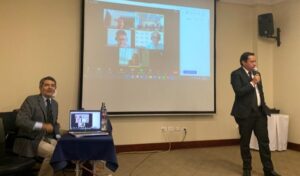
USDA Foreign Ag Service’s Ecuadorian Ag experts: Andres Barahona, Esteban Espinoza. Joining remotely: US Grains’ regional director Marri Tejada, USSEC’s regional director Carlos Salinas, and USSEC’s Ecuador expert Gerardo Luna.
We arrived at a beautiful specialty coffee farm- Frajares. This farm has been in production since 2014. The owner gave us an amazing demonstration on the growing, harvest, processing, roasting and grinding. Here at this elevation there is more caffeine in pulp than in beans. The process of fermentation of some of the beans is performed three different ways; anaerobic, dry and wet, which gives the coffee different characteristics. Then the beans is dried in open air (12 days in open air- no heat). When it is dried the husk if the beans is removed, sized for even roasting, roasted, blended and bagged. It is bagged in special bags that allow for breathing.
Coffee is very labor intensive. Med roast is best balance of bitter, sweet and acidic.
Coffee was first product that was “fair trade “.
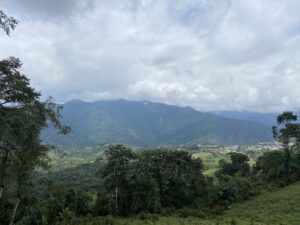
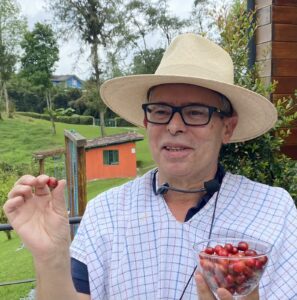
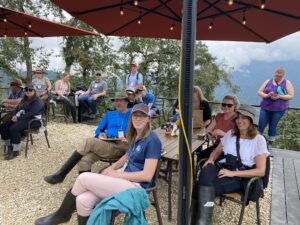
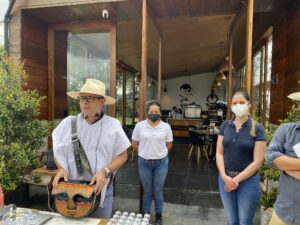
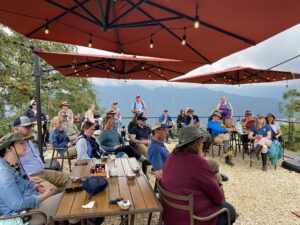
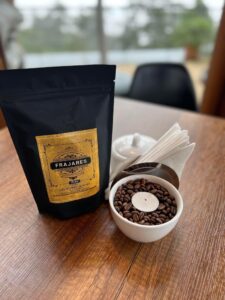

How to brew the perfect French roast: When French pressing do not use boiling water. 92 c.4 min for optimum flavor. There is more caffeine in French press than espresso.
How to brew propped Drip coffee:
- Filter is wetted prior to adding the coffee. 2. Wetten the grounds. Aromas show up first. 3. Drip for 4 minutes.
Cold press has ever more longer contact with water, which means more caffeine.
It was suggested to pair chocolate with coffee. It is like wine and cheese.
After the coffee class and -tasting, the group was taken on a tour of the processing and roasting facility. Exactly as predicted by this week’s tour guide Ivan, it started pouring mid-afternoon. The rubber boots provided by him, were definitely useful. Before returning to the bus and resuming our travels, Shannon thanked Fernando, the Colombian owner of Frajares, for his hospitality.
Submitted by Seminar Management Team “Black”: Shannon Gegner, Holly Hatlewick, Austin Ludowese, Chelsea Honnette
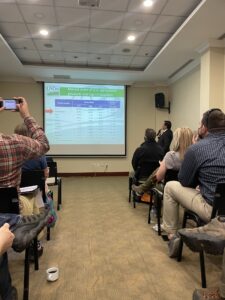
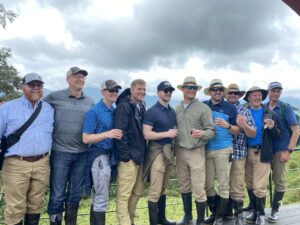
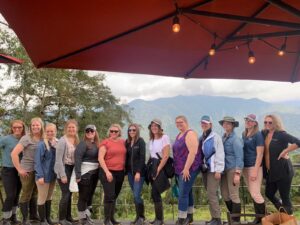
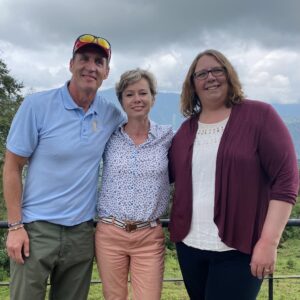
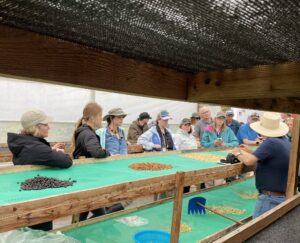
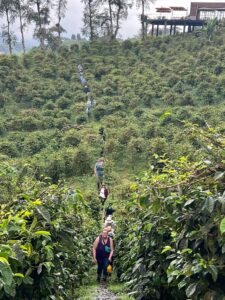
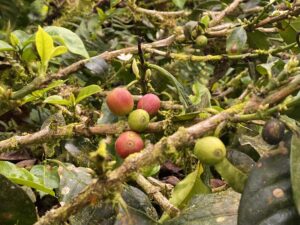
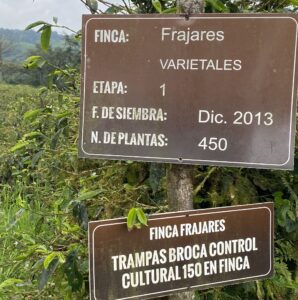
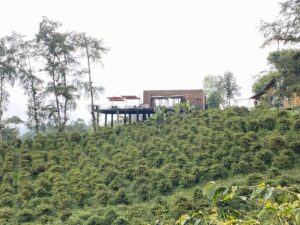
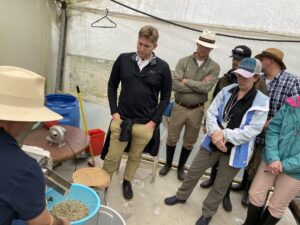
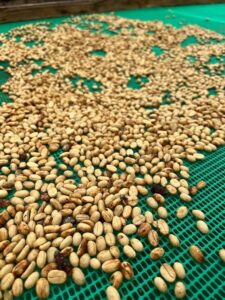
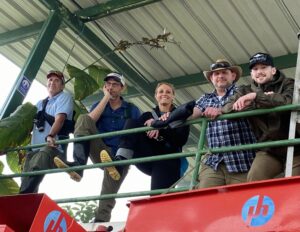
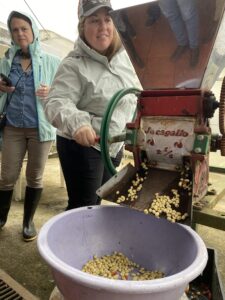

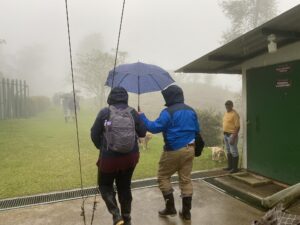
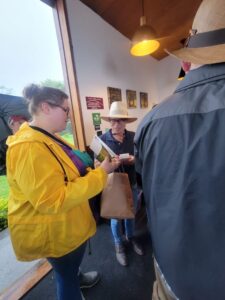
Comments